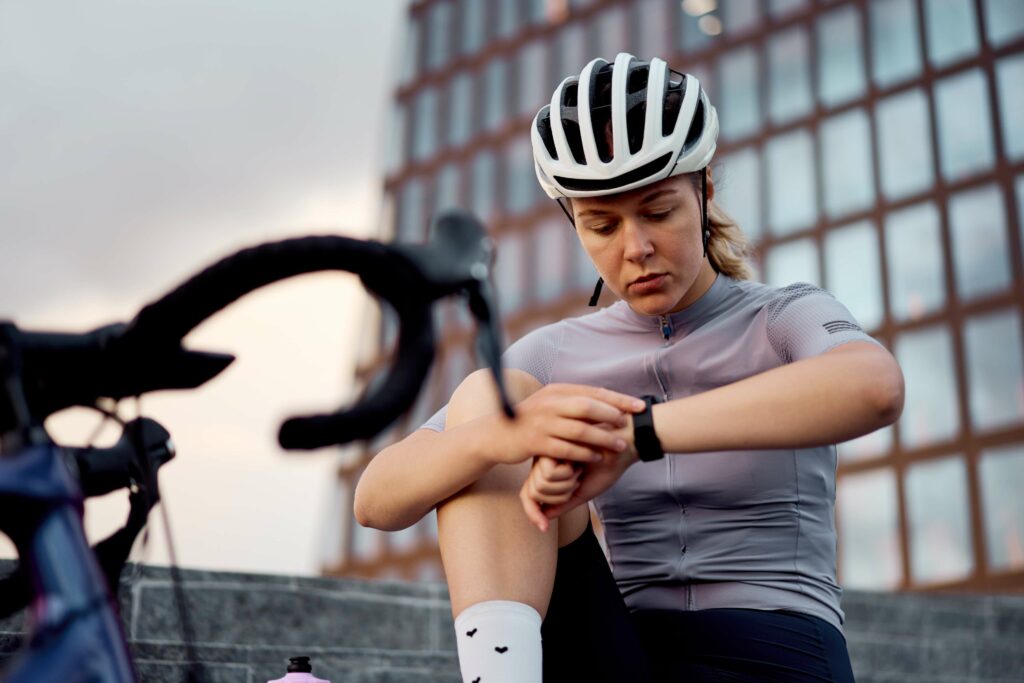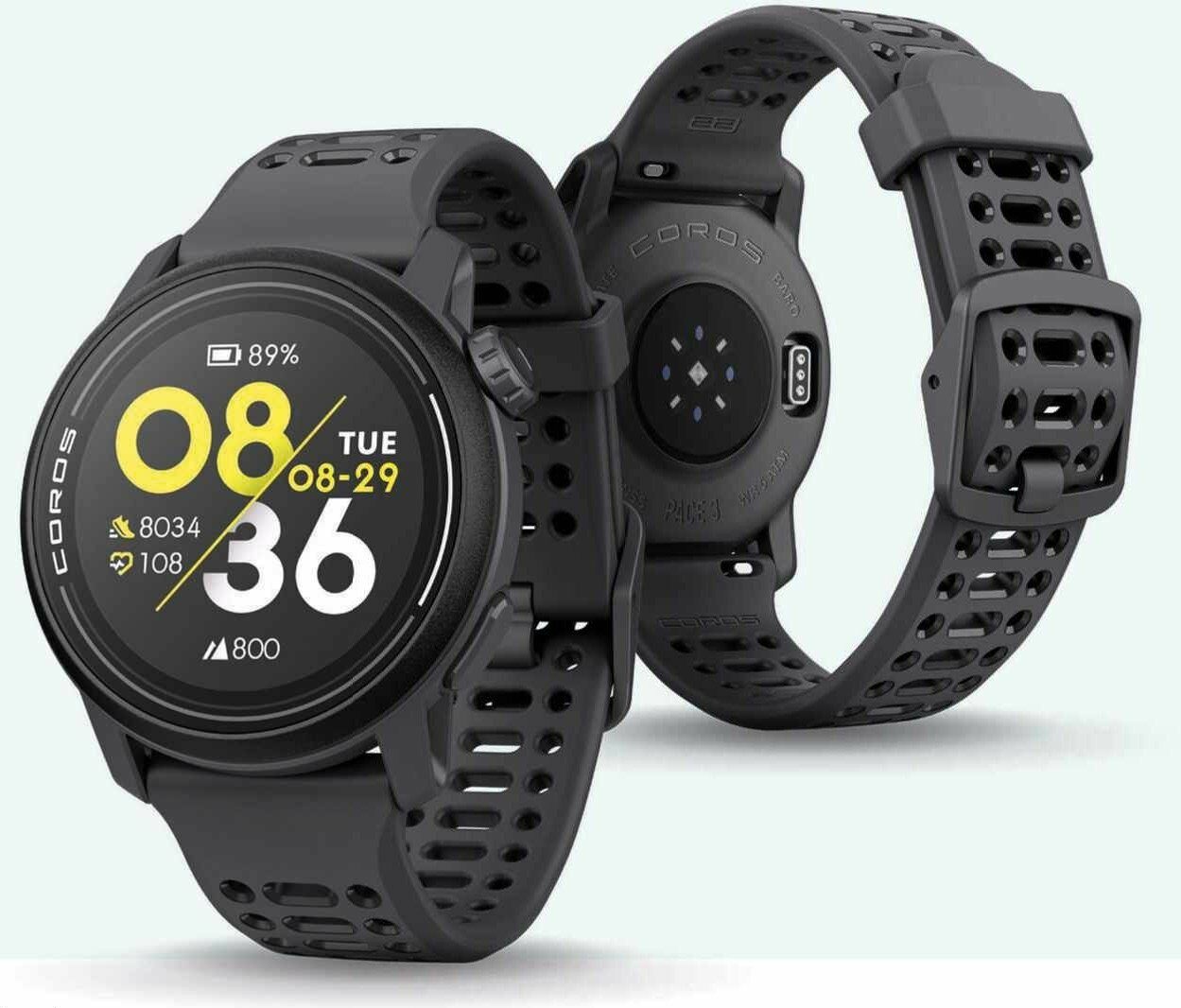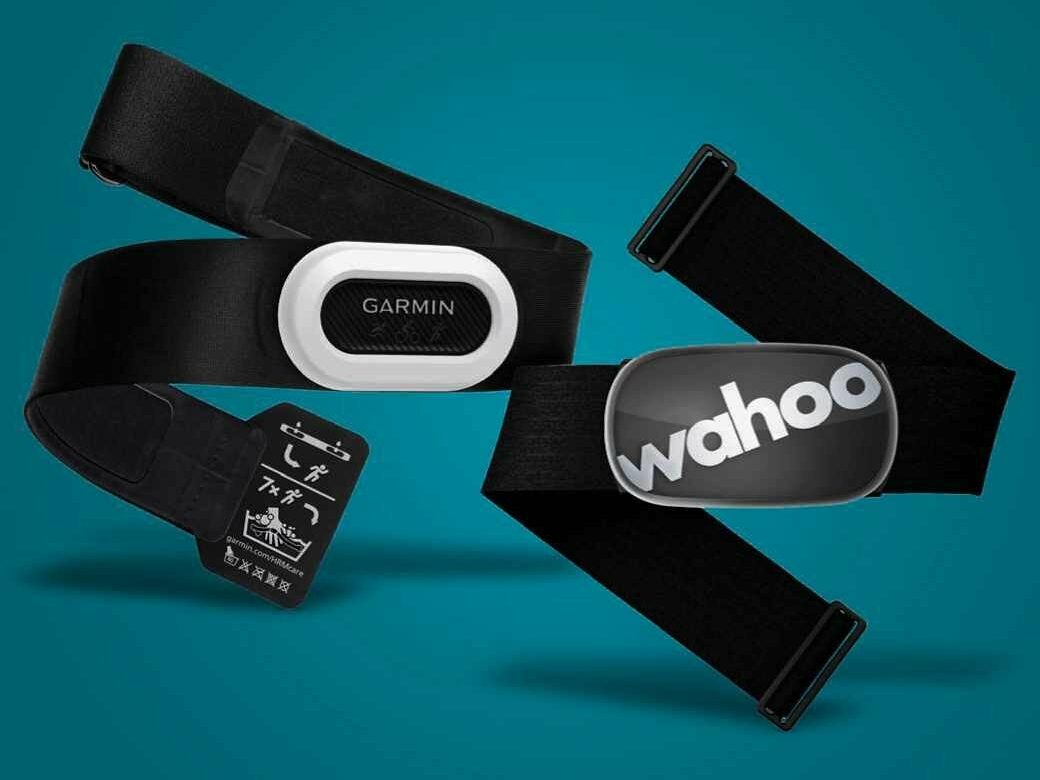PERFORMANCE Q&A
Boost your ride
The big cycling questions answered by our team of expert coaches, nutritionists and riders
01 HOW ACCURATE IS MY SMARTWATCH?

In 2023, the global wearable technology market was valued at $130 billion. This includes fitness and smartwatches. Seen through a sporting lens, they delver a swathe of fitness metrics including your heart rate. This is useful information to guide your training. But are the results accurate?
Wrist-based heart-rate sensors are a more usable and portable option than the traditional chest-strap option. They’ve evolved over the years but, essentially, they follow the same principle of employing optical heart-rate sensors that measure changes in blood volume in the capillary layer that sits just beneath the epidermis, which is the outermost of the three layers that comprise skin.
As is common in sport, it’s technology first seen in the medical and therapeutic arena that’s been adapted for performance purposes. But whereas studies into the likes of EPO show a consistent, significant (illegal) boost, the same can’t be said of these optical measurements, with a key inaccuracy reported to be skin colour.
TOP TIP
Your body contains tens of thousands of calories in fat stores, meaning an almost inexhaustible supply of energy… if you can tap into it. Studies show that riding at 70% of your maximum HR is optimum.
It’s something we put to Pilar Martin-Escudero of Madrid University, an expert in this area. “One primary inaccuracy source is skin pigmentation,” says Martin-Escudero. “[These devices] operate by shining light through the skin. Melanin, responsible for skin colour, can absorb light at specific wavelengths, complicating readings in individuals with darker skin tones.”
This, says Pilar Martin-Escudero, also applies to the accuracy of watches that measure oxygen saturation. But is this the experience of those in the commercial business? In fact, leading lights such as Garmin are pretty honest with the effectiveness or not of wrist-based optics. Over to Rich Robinson, senior product manager at Garmin UK.
“Garmin watches are designed to work on all skin tones but as the level of melanin increases in the body, the sensor may have to work harder by increasing the light brightness to find a pulse. This can result in the battery level being depleted faster.”

Robinson suggests it’s the battery rather than the readings that take the hit. But it’s clear that your skin tone impacts performance. This covers tattoos, too, as the ink pattern and saturation of colour can block the light from reaching the sensor.
There is good news when it comes to your erratic epidermis, however, especially for those of us for whom the years are mounting. No matter how expensive your moisturiser, your skin changes with age. That, according to researcher Hsuh-Wen Chow of National Cheng Kung University, means “fine wrinkles, roughness, mottled hyperpigmentation, dilated blood vessels and loss of skin tone”. In addition to age-related changes such as arterial stiffness, Chow and colleagues hypothesised that heart-rate readings would be inaccurate. However, after testing 20 adults over 65 years old and 20 between 20 and 26, they reported readings were “generally accurate” irrespective of age.
$322 BILLION
The global wearable technology market is predicted to be worth this much by 2028
Harder, faster, less accurate
Accuracy isn’t solely about your skin, of course, with one of Pilar Martin-Escudero’s studies examining another anecdotal issue: that the harder you exercise, the less accurate the results. The Spanish academic had subjects run on a treadmill or ride on a cycling ergometer wearing watches from Apple, Fitbit, TomTom and Samsung. They were tested at increasing intensity against the gold-standard ECG (electrocardiogram).
“The four devices were reasonably accurate at the lowest level,” she says. “However, at higher levels of exercise intensity, the Fitbit and Samsung tended to underestimate heart-rate values while the TomTom and Apple were fairly reliable.”
When it came to cycling and running, and using the TomTom as an example, it proved more accurate on two wheels than two feet with treadmill skews kicking in from 150bpm compared to around 128bpm. Why comes down to something Martin-Escudero calls ‘motion artifacts’; when running, you’re not as fixed as you are on the bike. As you run harder, the watch can move, let light in and impact results.
Robinson tell us that their models are equally accurate on the bike and run if the watch stays in the same position, which, of course, isn’t always possible unless you want to create a tourniquet on your forearm. He also highlights that they’re now on their fifth generation of sensor, with more LEDs and ‘better’ algorithms to iron out the data for greater accuracy. Robinson still suggests a heart-rate strap for the “best accuracy possible”. Which is why you’ll see Tour riders’ saturated tops revealing the contours of chest straps. By measuring the electrical activity of your heart, they’re closer to the ECG standard.
TOP TIP
Avoid smart training too close to your appliances. “Move away from sources that can interfere with your heart rate monitor,” say Garmin. “These may include strong electromagnetic fields, some 2.4 GHz wireless sensors, high-voltage power lines, electric motors, ovens, microwave ovens, 2.4 GHz cordless phones and wireless LAN access points.”

But does this accuracy matter? If you have a busy life and want to maximise every session to unleash your optimum at a major event, then it does. To improve as a cyclist you need to be fast, possess great stamina and generate power. A watch can monitor your intensity of riding to either become a greater fat-burner or to burn through carbs. For instance, 60-70% (zone one) might be about improving the body’s ability to burn fat, while training at 94-100% of maximum HR will boost all-out power. If you’re training harder or easier than your watch is telling you, you could be hitting the zonal middle ground, so you’re not maximising the adaptation you’re after, be it speed, power or stamina. This can impair your progress or lead to overtraining.